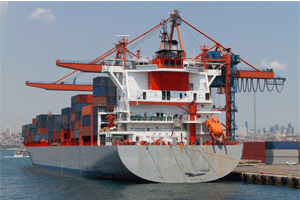 The labor dispute between the International Longshoreman Workers Union (ILWU) and the Pacific Maritime Association is finally resolved. The two parties recently agreed to a new five-year contract, which means normal activity is resuming at 29 West Coast ports, including the critical Ports of Los Angeles and Long Beach.
The labor dispute between the International Longshoreman Workers Union (ILWU) and the Pacific Maritime Association is finally resolved. The two parties recently agreed to a new five-year contract, which means normal activity is resuming at 29 West Coast ports, including the critical Ports of Los Angeles and Long Beach.
According to Tod Yadzi, a principal at third-party logistics (3PL) provider TAGG Logistics, the closure was like a kink in a garden hose, and now that the kink has been removed, there will be lots of built-up pressure from inbound containers. Many warehouses will instantly go from empty to overwhelmed, which means that space and labor shortages aren’t far behind.
So while it will take months for operations to return to normal, this crisis is about over. But what about the next one? If history is any indicator, it’s not a matter of if another disruption like this will occur, but when. What can suppliers do now to help soften the blow of the next unpredictable fulfillment crisis?
One measure is to establish an outsourced fulfillment and distribution relationship with a reputable 3PL — ideally one that manages multiple distribution facilities in multiple locations. Such partnerships reduce the risk and impact of supply chain disruption by expanding the number of options available to a customer. Such partnerships also make the post-crisis return to normal operations as swift and painless as possible.
For example, if a certain region is impacted by a disruption more than others, a 3PL with multiple facilities has the agility to redirect containers in a way that keeps shipments moving smoothly for all customers. In addition, an established 3PL has sufficient warehousing and labor resources on hand to handle the peak periods of activity that inevitably follow disruptions in the supply chain.
Yadzi also believes that 3PLs have a far clearer picture of the logistical landscape than do suppliers who handle the logistics themselves. And when those 3PLs employ fulfillment solutions that provide detailed inventory visibility across the supply chain, they are able to make faster, more well-informed routing decisions based on who needs inventory most. They are also better able to handle the capacity crunch that results from port closures or other disruptions.
The lesson learned from the West Coast port closures is to remain agile by seeking out supply chain partners that offer scalable resources and the expertise to quickly and smoothly manage disruption and its aftermath. And while disruption may be unavoidable, having alternative courses of action is essential.
Peter Zaballos is vice president of marketing and product for SPS Commerce
